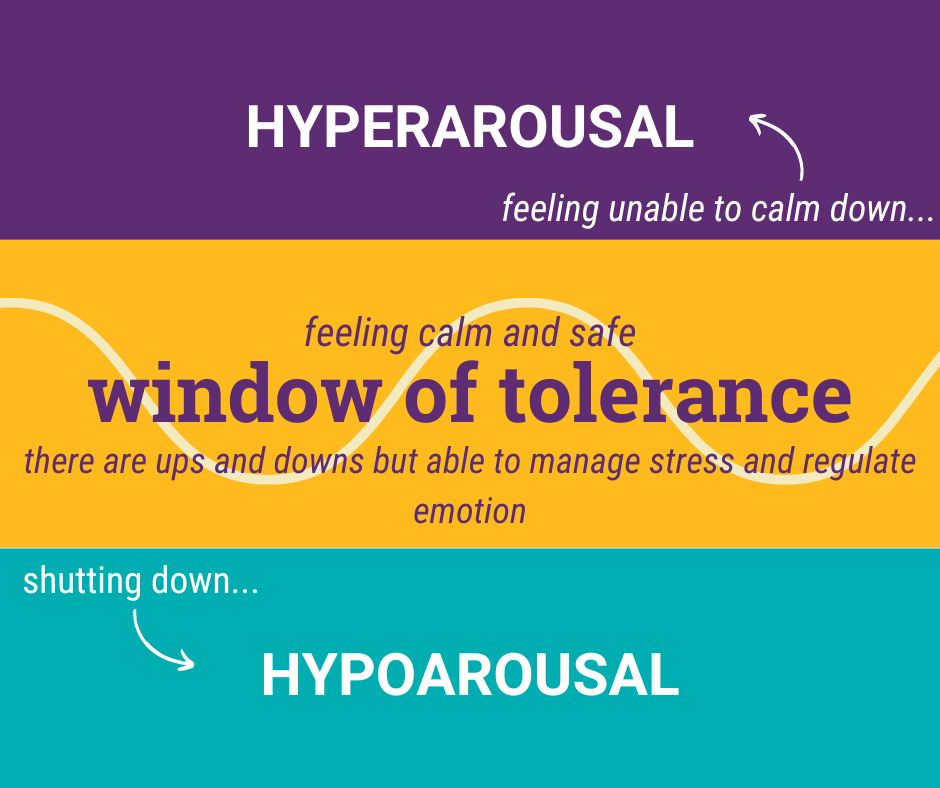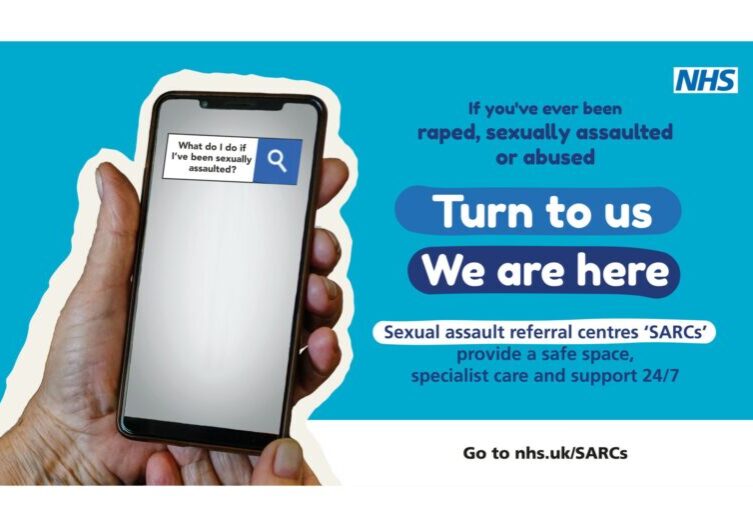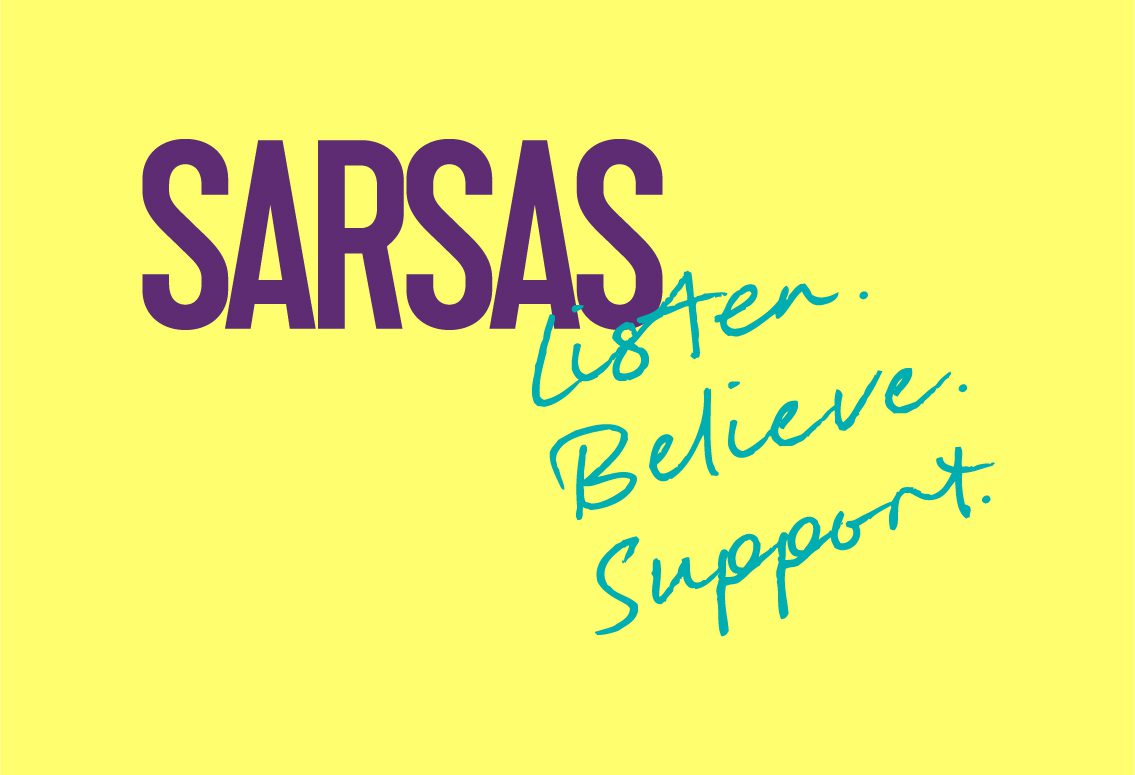
What is the Window of Tolerance?
Have you heard of the Window of Tolerance? We talk about the window of tolerance a lot in our support and group work and many victim-survivors find it helpful as a way of understanding some of their responses to trauma.
It’s a term that refers to the range of emotional and physiological states within which someone can effectively process and cope with stress, emotions, and challenges.
When we think about the impact of trauma on victim-survivors, the window of tolerance can help explain how we may respond to different levels of emotional stress and how these responses can impact our ability to function and engage in daily life.
But what actually is it?
Try and visualise an actual window. The window represents a state where there may be ups and downs or things that happen outside of our control, but we can manage them without becoming hyperaroused (unable to calm down) or hypoaroused (shutting down).
We all have our window between two states: hyperarousal and hypoarousal (we’ll talk more about those shortly), where we feel able to cope with the day-to-day, manage stress, and regulate our emotions.
Within our window, we can feel safe, calm, and in control. When we’re within our window of tolerance, we’re able to handle stress and challenges in a way that works for us. But when we’re outside of it, we may experience anxiety, panic, or dissociation.

What is hyperarousal?
If someone is experiencing hyperarousal, they may feel overwhelmed, anxious, panicky, and have difficulty managing their emotions. They might notice that their heart is beating faster, their breath is quicker, and they are sweating more than usual. A surge in energy may occur, which can make it difficult to concentrate and to sleep. These kinds of reactions are often associated with the “fight or flight” response, where the body prepares to react to a perceived threat.
What is hypoarousal?
On the other end of the spectrum, hypoarousal involves reduced emotional and physiological activation. We may feel numb, disconnected, and emotionally ‘shut down ’. Our bodies might feel heavy and joints stiff, and we may feel like we want to just lay in bed all day and do nothing. This can be likened to the “freeze” response, where the body and mind may become immobilized to cope with overwhelming or threatening situations.
What impact does trauma have on our window of tolerance?
For people who have experienced trauma, such as victim-survivors of sexual violence or domestic abuse, the window of tolerance can shrink due to the impact of the trauma on the nervous system and our brains becoming more tuned into danger. This means that the instinctive, ’survival’ part of our brains can tip into fight, flight, or freeze states when we don’t need to be. Triggers and unexpected or stressful situations can quickly tip us into either hyper or hypoarousal.
Some things that might help
- Firstly, know that you are not alone. The impact of trauma on your window of tolerance is shared by many victim-survivors
- Secondly, although it can feel hard to get back into the window of tolerance once we’re in hyper or hypoarousal states, it is not impossible, and you can grow your window of tolerance again
- Grounding techniques can help bring us back down from hyperarousal and back up from hypoarousal. You will need to find what works for you, but some ideas might be:
o Breathing exercises
o Running your hands under cold or warm water
o Stepping outside into the fresh air
o Going for a short walk
o Having a grounding object with you that you can touch or hold if you feel triggered
o Thinking of a real or imagined safe place
o Essential oils – some people find certain smells can help relax or energise them.
- Practice grounding techniques when you feel calm so they become a part of your tool kit to help manage overwhelming feelings. As with all grounding or self-care techniques, finding what works for you can take time
- When you are feeling calm, try thinking about some of the signs your body gives you that you might be tipping towards hyper or hypoarousal. As you start recognizing some of these signs, it may be easier to use different grounding techniques you have identified as helpful to bring you back to your window tolerance.
You can find more information about grounding on our website.
If you need support or want to talk about different grounding or self-care ideas, you can contact our helpline services. We will listen, believe and support you.
The window of tolerance is a concept originally developed by Dr. Dan Siegel, M.D
The latest from our news and blogs

What is a sexual assault referral centre (SARC)?
A SARC can offer free, confidential medical, practical and emotional support to people who have been raped, sexually abused or assaulted at any point in their lives. They’re usually provided by the NHS, but will always have specially trained doctors, nurses and support workers.




